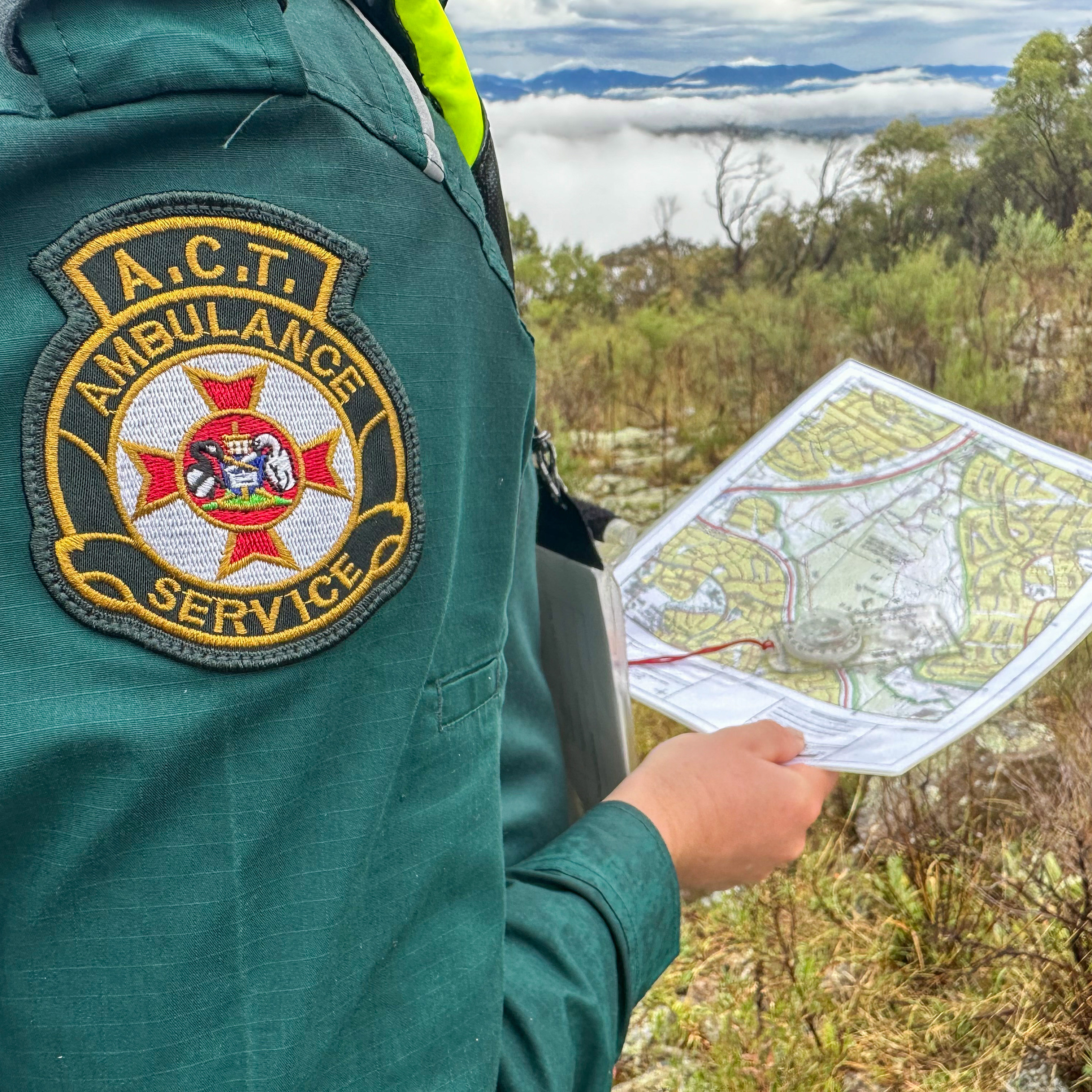ACT Ambulance Service paramedics respond to challenging calls across Canberra every day, but outside of the Territory’s urban areas, these challenges can quickly magnify, as patients may need assistance when they are isolated on top of mountains, hiking through dense bushland, or during extreme weather events.
To deal with these situations in difficult environments, the ACT Ambulance Service has a specialised remote area capability.
Joel Powell, a Project Manager in Transformation and Capability Development, says this highly trained team, which he is a member of, has the skills and training to provide life-saving medical assistance in some of the ACT's most isolated and hard-to-reach locations.
“When it comes to the urban environment around Canberra, the built-up roads and streets, we've got a very good capability to provide our service there,” he says.
“But when we get outside of that, even up in closer areas like the Brindabella Mountains, there's some environments and topography that make things difficult.
“The Remote Area Paramedic (RAP) team has been trained to access, treat, and extricate patients from areas that normal two-wheel-drive vehicles can’t reach.”
While all team members have the skills required to work in traditional paramedic roles, the RAP team undergoes additional, specialised training, to ensure they are equipped to handle the extreme conditions of remote and wilderness settings.
This includes four-wheel driving, advanced driving techniques, and hiking over difficult terrain.
The team also learns essential survival skills, like shelter-building and how to navigate under challenging conditions.
"We need people who can think on the fly, who can improvise and who can adapt to unpredictable situations," says Joel.
“Attending to these jobs in the wilderness is not the idealised version of camping by a fire—this is about working in some of the most uncomfortable and harsh environments that the ACT can offer, often with very limited resources."
The RAP team’s capability was enhanced this year with ESA’s acquisition of a specialised four-wheel-drive vehicle.
Equipped with a range of survival and medical gear, this vehicle allows paramedics to access areas that traditional emergency vehicles cannot, while offering a higher level of safety and comfort.
It carries enough medical and survival equipment to sustain paramedics and patients for up to 36 hours. This includes stretcher capabilities, oxygen, and a defibrillator, among other essentials.
However, Joels notes that the vehicle is stocked with enough equipment for only one job.
“Once the mission is complete, the gear is exhausted and needs replenishing,” he says.
“So, our paramedics must be resourceful and prepare for the unexpected.”
Sometimes even the vehicle will only be able to get them so far, and Remote Area Paramedics are required to be able to carry 85-litre backpacks filled with gear and medical supplies, for up to 24 kilometres.
However, these intrepid paramedics will rarely work in isolation, with the team closely collaborating with other emergency services like the Australian Federal Police, ACT Fire & Rescue, and the ACT State Emergency Service.
“There’s always a high level of communication and coordination before a job is dispatched,” says Joel.
“The police are often the lead agency in search and rescue, but we work together as a cohesive unit, ensuring that we can provide the best possible care under challenging circumstances.”
As Canberra’s population continues to grow, so too does the need for the RAP team, as more people venture into the outdoors for bushwalking or camping.
While the team is standing by to help when required, Joel stresses that prevention and preparation are key.
“Before venturing into the bush, I strongly advise everyone in the community to check the weather, and ensure that they have adequate gear and provisions,” he says.
“We always ask people to pre-plan their trips, consider a ‘Plan B’ in case things don’t go as expected, and let someone know where you’re going and when you plan to return.
“Finally, people should consider carrying communication devices, like personal locator beacons. A mobile phone is great, but in remote areas, it’s not always reliable.”
Looking ahead, the RAP team is focused on continuing to expand and refine its capabilities, including being able to provide even more support for the community, and emergency services personnel, like ACT Rural Fire Service volunteers.
“The aim is for a seamless, integrated approach to pre-hospital care in remote areas,” says Joel.
“We want to ensure that, when the worst happens, we’re ready and able to provide the best possible care to those who need it most.”


